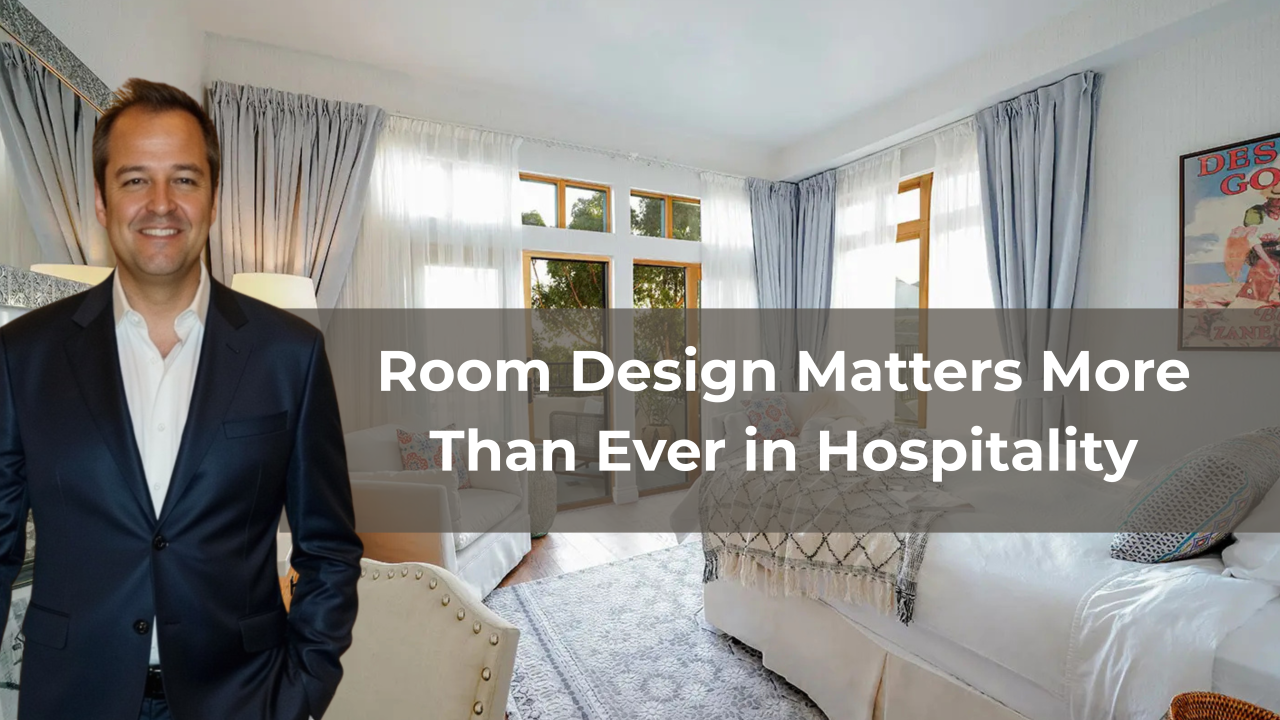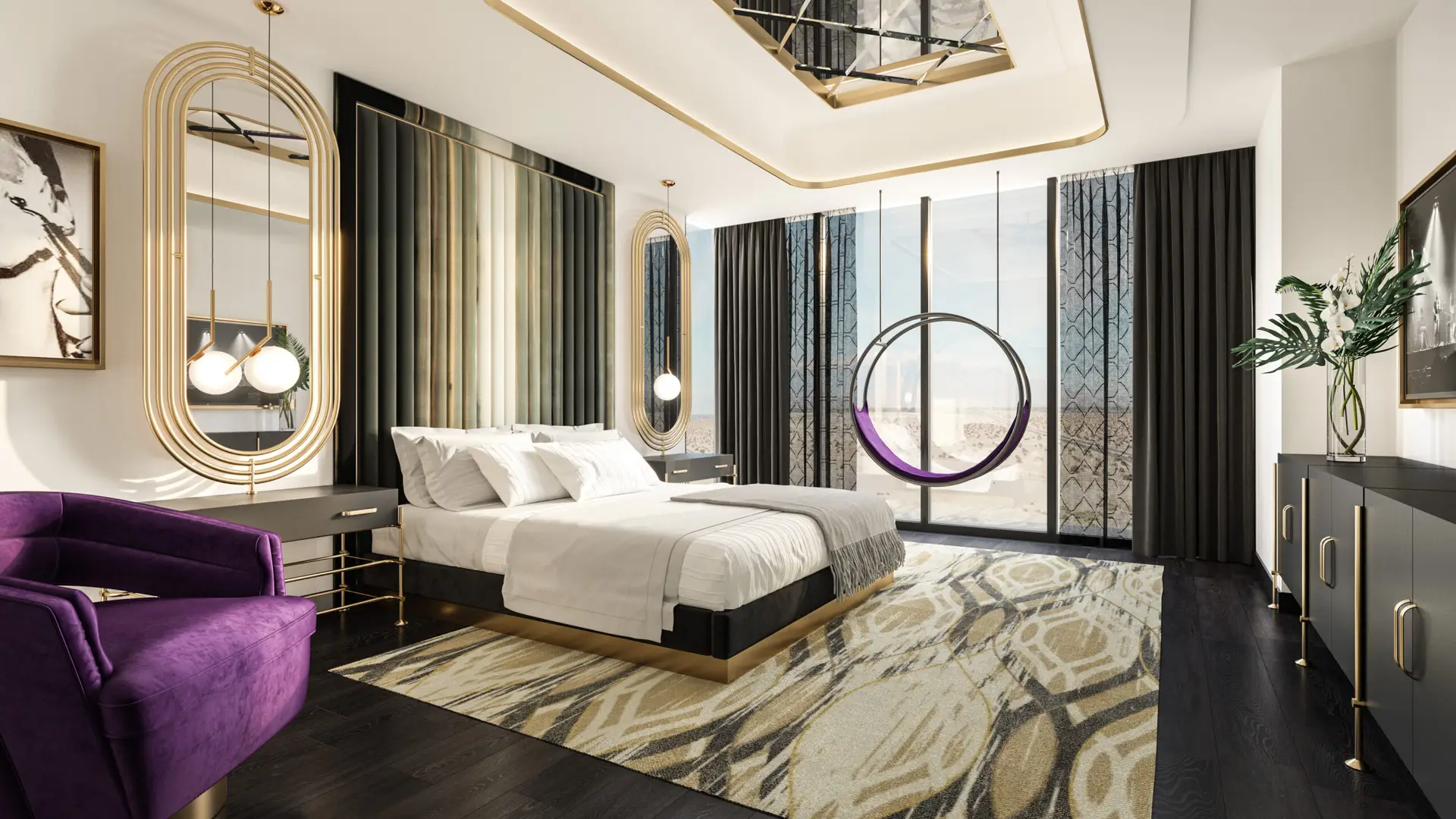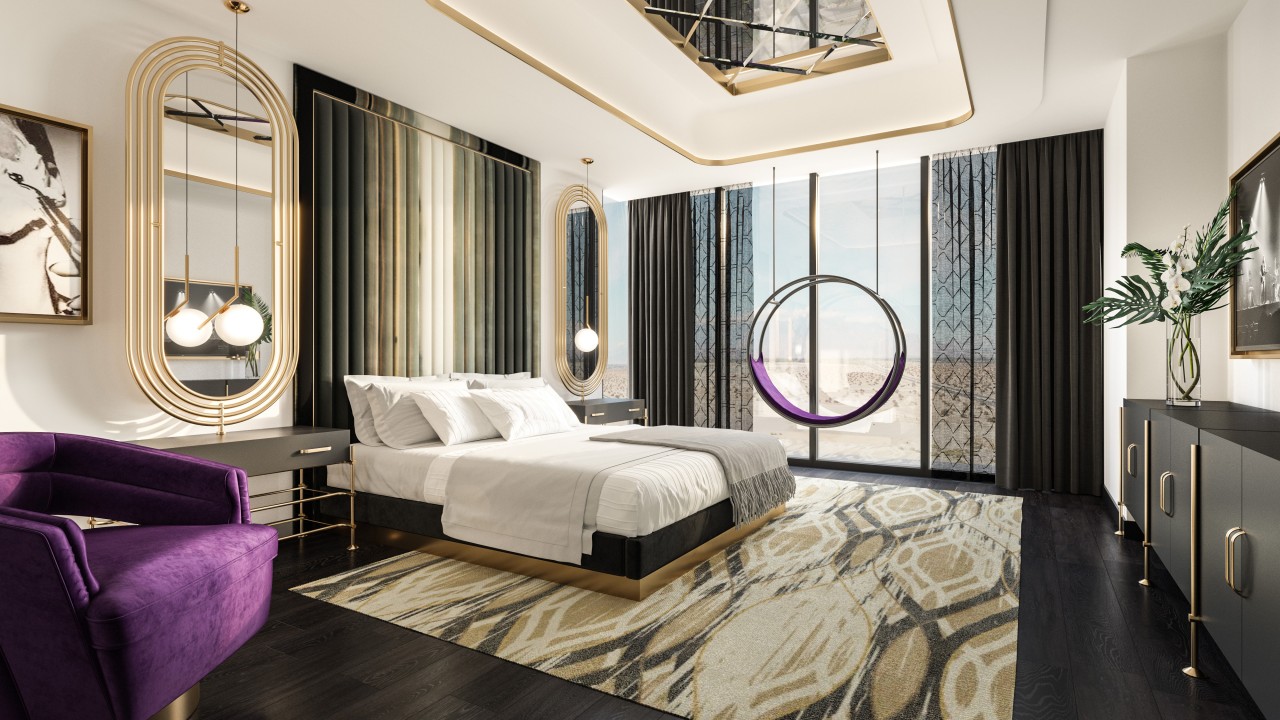Designing a hotel room today is no longer just about aesthetics. It’s about creating an immersive, wellness-focused, flexible sanctuary that supports both the emotional and practical needs of modern guests.
Why Room Design Shapes Guest Experience
Guest rooms are a foundational touchpoint. They set first impressions, influence mood, and anchor a guest’s view of the brand. Thoughtful interiors justify premium rates by reflecting brand values, comfort, and operational intelligence.
Color, layout, lighting, and material choices all play a psychological role: calming palettes soothe, rich jewel tones and layered textures invite luxury, and foster relaxation and engagement.
Knowing what guests are looking for and that feeling they get when they check into a hotel room is what IGroup design is all about.
Key Trends Leading Room Design in 2025
🪴 Biophilic & Wellness-led Interiors
Rooms now incorporate nature-inspired finishes like raw wood and stone, greenery, and water features to promote peace and clarity. Air purification, circadian lighting, blackout systems, and high-performance bedding prioritize sleep and wellness.
🎨 Warm Palettes & Textural Depth
2025 brings a shift from minimal gray schemes to layered palettes—deep greens, rich browns, terracotta, jewel tones—combined with tactile materials like velvet, leather, and textured wall finishes for a rich yet approachable atmosphere.
🔄 Flexibility & Adaptive Comfort
Furniture now plays double duty—nightstands can work as desks, lounge chairs fold into yoga spaces, and modular layouts adapt seamlessly to solo travelers or families alike.
💡 Smart & Sustainable Room Systems
Sustainability is front and centre—eco-friendly textiles, recycled materials, energy-efficient lighting. Smart systems personalize temperature and lighting, anticipate guest needs, and reduce waste.
🎭 Authentic Storytelling & Experiential Design
Designs now embody memory and meaning: artwork, local motifs, even layout decisions reflect the hotel’s locale and narrative. This experiential layer elevates a room from functional to memorable.
How to Execute High‑Impact Room Design
- Begin with the guest journey in mind: sleep quality, functional flow, wellness triggers.
- Layer your sensory palette: materials, color, lighting, and art that resonate emotionally yet support relaxation.
- Integrate adaptability: from movable furniture to modular zones that flex with guest needs.
- Make tech seamless: smart lighting, adaptive HVAC, USB-equipped desks.
- Infuse a sense of story: local artistry, narrative color accents, or textures that anchor place identity.
Hotel room design now sits at the nexus of wellness, brand storytelling, operational efficiency, and emotional impact. Done well, it elevates a stay from room to refuge and becomes a core driver of satisfaction, loyalty, and profitability.
If you’re considering a room makeover or planning a renovation, it’s worth asking: are your rooms truly designed for today’s traveler?
Let’s chat if you’d like to explore how your room design can deliver tangible ROI and memorable stays. Contact Us here!






